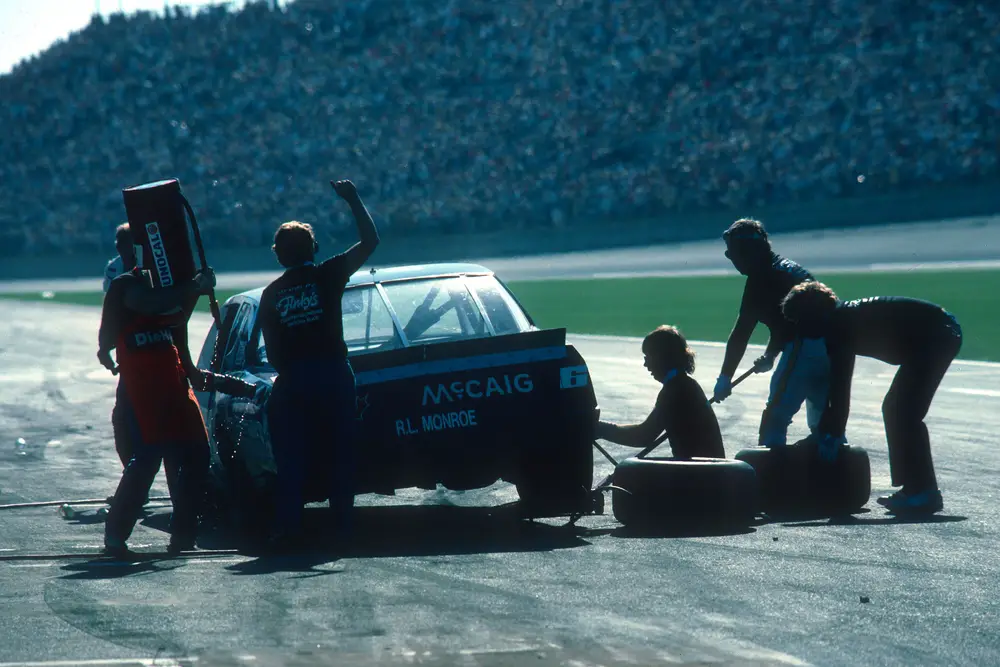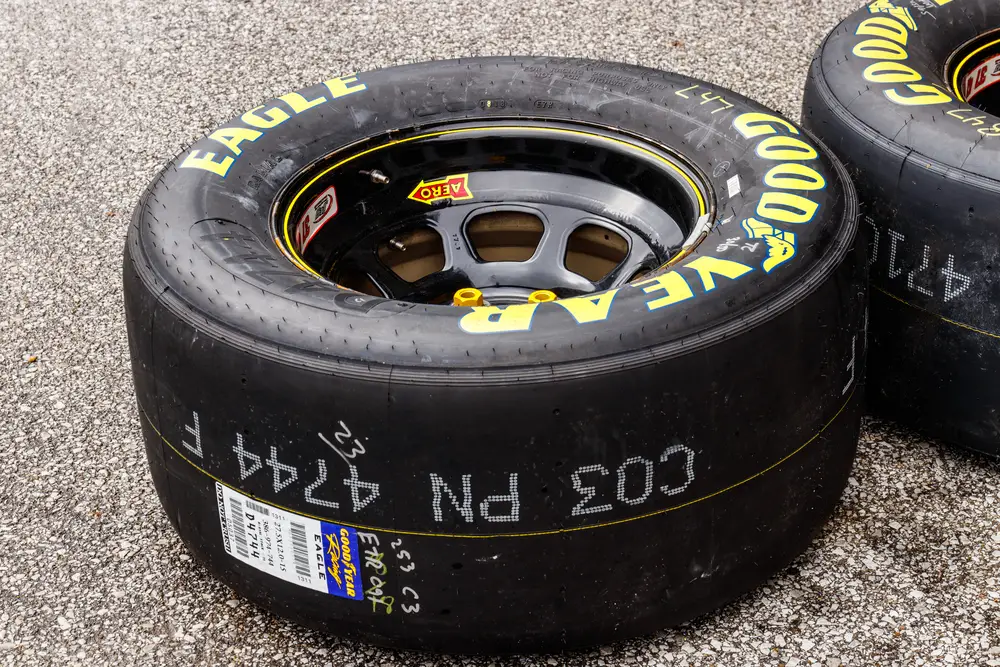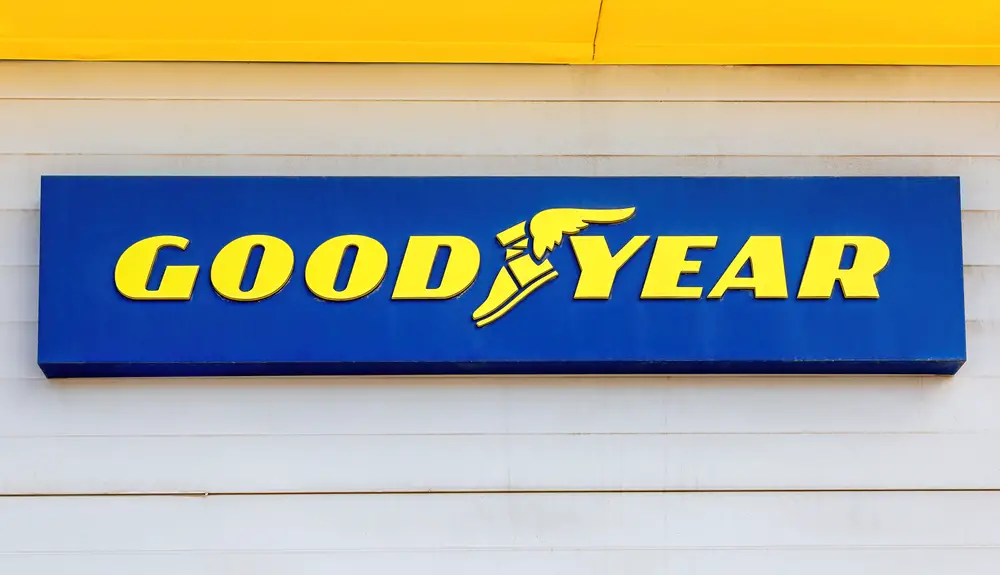In the world of NASCAR, tire performance plays a crucial role in a driver’s ability to race competitively and safely. One term you might hear within this high-speed sport is “sticker tires.”
But what exactly are sticker tires, and why are they such a significant topic in NASCAR?
Quick Answer:
Sticker tires, in NASCAR, refer to brand new tires that still have the manufacturer’s stickers on them. These tires offer the best grip but wear out faster. They’re often saved for the final stages of a race when the improved traction can give a decisive advantage. However, teams have to manage their tire allotment carefully, considering track conditions, race strategy, and tire wear rates.
NASCAR teams often employ these fresh tires during the most critical moments of a race, as their exceptional traction can make the difference between winning and losing.
What Are Sticker Tires (Detailed Explanation)?
Sticker tires are a term used in NASCAR to describe brand new tires that still have the manufacturer’s stickers on them.
In NASCAR, Goodyear is the official tire supplier, and they provide teams with these sticker tires before each race. These tires are known for providing better grip, handling, and traction compared to used or “scuffed” tires.
The name “sticker tires” comes from the fact that when these tires come fresh from Goodyear, they have barcode stickers attached to them. These stickers help track each tire’s production information and ensure proper distribution to NASCAR teams.
As the car goes out on the track for the first time with these tires, the heat generated from the friction between the rubber and the track surface will ultimately cause the stickers to come off.
Choosing between sticker and scuffed tires is an essential strategy for teams during a race. Sticker tires offer better performance initially because of their fresh, untouched rubber compound.
They also have a better heat cycle, which means they can provide maximum grip for a longer period. However, as the race progresses, the tires go through various heat cycles, causing the rubber compound to harden and lose some of that initial grip.
In contrast, scuffed tires have already experienced a few heat cycles, causing the rubber compound to harden slightly. This offers a more consistent grip and can reduce the risk of tire failures such as blistering and delamination.
Teams may also scuff their tires during practice sessions to gain more understanding of how the tires will perform during the actual race.
Benefits of Sticker Tires
Improved Grip
Sticker tires, or new tires with their stickers still visible, offer improved grip on the racetrack. These tires have a fresh layer of rubber that provides better contact with the road surface, enhancing the vehicle’s ability to hold its line through corners and maintain speed.
This enhanced grip is especially critical in NASCAR, where drivers are regularly navigating high-speed turns on different types of racetracks.
Increased Control
When using sticker tires, drivers experience increased control over their race cars. The added grip from fresh rubber enables better steering and braking, allowing drivers to maneuver their vehicles more precisely during the race.
This additional control may mean the difference between executing a successful pass or getting caught in a multi-car accident. The better control provided by sticker tires is a valuable tool in any NASCAR driver’s arsenal.
Better Traction
Finally, sticker tires offer better traction in various track conditions. New tires, with unblemished rubber, can better maintain contact with the track surface, whether it’s slick from oil or debris, wet from rain, or a hot and sticky racing surface.
This added traction is essential in NASCAR, as it enables drivers to keep pace with their competitors and avoid potential wrecks or spin-outs that could cost them valuable positions in the race.
Scuffs Vs Sticker Tires
Scuffs
Scuffs, also known as used or ‘race-worn’ tires, are tires that have been driven on before. They have been through practice laps or races, with the primary advantage being their heat cycle. A heat cycle alters the internal structure of the tire, which can lead to improved grip and more predictable performance.
Sticker tires, on the other hand, are brand-new tires that have never been used on the track. They come with a visible manufacturer sticker, hence their name. As they are fresh out of the factory, their rubber compounds are in pristine condition and can offer a greater grip on the track for a limited period.
When to Use Each Type
Scuffs:
- More consistent performance
- Better suited for tracks with high tire wear
- Typically used during practices and race sessions
Sticker Tires:
- Provide maximum grip for a shorter duration
- Ideal for qualifying laps to secure a good position
- Useful during later stages of the race when a burst of speed is needed
Components and Manufacturing
Tread Compound
The Goodyear Racing Eagle tires used in NASCAR feature a unique and specialized tread compound. This compound is specifically formulated to provide an optimal balance between grip, durability, and performance on the race track.
The chemistry of the tread compound can be adjusted to suit various track temperatures and conditions.
Structure and Layers
There are several layers and components that make up a NASCAR sticker tire, and each plays a critical role in its performance:
- Bead: The innermost part of the tire that secures it to the wheel. Made of high-strength steel, the bead provides a tight fit and ensures the tire remains in contact with the rim.
- Carcass plies: These are layers of fabric, typically polyester or nylon, that form the body of the tire. They give the tire its shape when inflated and provide strength and flexibility.
- Belt package: A layer of steel belts is placed on top of the carcass plies. These belts add strength and impact resistance to the tire while helping maintain its shape during high-speed racing.
- Inner liner: A layer of specialized rubber forms an airtight seal within the tire, ensuring it retains air pressure.
- Tread: The outermost layer that provides grip and comes into contact with the track surface. It features the unique tread compound mentioned earlier.
Curing Process
The curing process is an essential step in the manufacturing of NASCAR sticker tires. During this process, the various layers and components are subjected to high temperatures and pressures to bond them together.
This not only gives the tire its final shape but also helps to ensure the various components provide optimum performance and durability.
The curing process is carefully controlled to deliver consistent results while meeting specific performance requirements for NASCAR racing tires.
Pit Stops and Tire Strategy

Tire Wear
In NASCAR, tire wear is a crucial factor in determining a team’s strategy during a race. Tires gradually lose grip and performance as they wear down, which can affect a driver’s handling and overall lap times.
As a result, pit stops play a massive role in helping teams manage tire wear and maintain competitive speed on the track. Teams closely monitor tire wear and adjust strategies based on real-time data, aiming to find the right balance between tire conservation and aggressive driving.
Right-Side Tires
In most NASCAR races, right-side tires tend to wear out faster, as tracks typically have more right-hand turns. Consequently, teams often replace only the right-side tires during a pit stop, reducing time spent in the pit lane.
However, this decision also depends on factors like track position, race length, and tire conservation objectives. In some cases, teams might change all four tires to ensure better handling and grip during a critical section of the race, even if it takes slightly longer.
Goodyear and NASCAR Collaboration
Tire Testing
Goodyear, headquartered in Akron, Ohio, has been the exclusive tire supplier for NASCAR since 1997. Their collaboration involves extensive tire testing and development to ensure optimal performance and safety on the racetrack.
Tire testing is conducted throughout the year at various tracks, giving teams an opportunity to try out the new tire combinations and work closely with Goodyear engineers.
These sessions help Goodyear fine-tune their tire designs based on driver feedback and track conditions.
Quality Control
Quality is a top priority for both Goodyear and NASCAR. Goodyear’s commitment to providing NASCAR with high-quality tires includes rigorous testing processes and a strong focus on quality control.
Goodyear employs state-of-the-art technology and a stringent inspection process to ensure their NASCAR tires meet the highest standards. With all rights reserved for their tire designs, they work tirelessly to produce consistent, safe, and high-performing tires for the NASCAR community.
Role of Tires in NASCAR Racing
Tire Failure
In NASCAR racing, tire failure can have significant consequences. Tire blowouts or punctures can cause a driver to lose control of their vehicle, resulting in accidents and ultimately affecting the outcome of the race.
Factors that can lead to tire failure include excessive wear, incorrect tire pressure, and contact with debris on the track. Maintaining the right tire pressure and regularly inspecting tires for signs of wear help teams minimize the risk of failure during a race.
Effect on Performance
Tires play a crucial role in the performance of a race car in NASCAR Cup Series events. The tires’ grip level, tread compound, and thermal management all contribute to a car’s overall handling and ability to maintain speed through corners.
The choice between sticker tires (new tires with no laps on them) and scuffed tires (used tires) has a direct impact on lap times and tire management strategies during a race.
When it comes to performance, sticker tires offer better grip owing to their fresh tread, which in turn provides increased traction and improved handling. This can make sticker tires a better choice for short-run situations, such as late-race restarts or qualifying laps when teams want the car to perform at its best.
However, sticker tires tend to generate more heat and wear down quicker than scuffed tires, making them less desirable for long runs.
On the other hand, scuffed tires may provide more consistent performance over long runs, as they have already gone through a heat cycle and have lost their initial “stickiness.”
This can result in more predictable handling, lower tire temperatures, and a longer-lasting tire. Some teams strategically use scuffed tires to help manage tire wear throughout the race, leading to optimized performance for different segments of the race.



